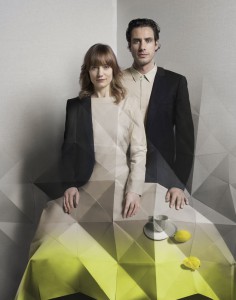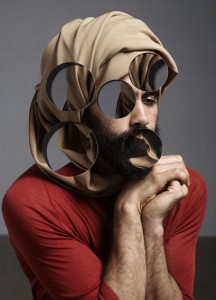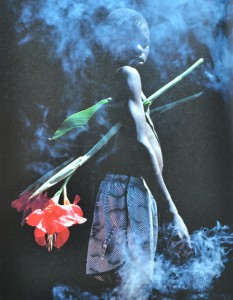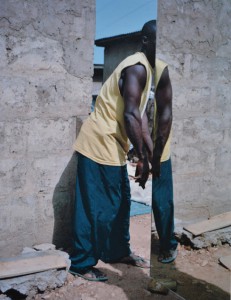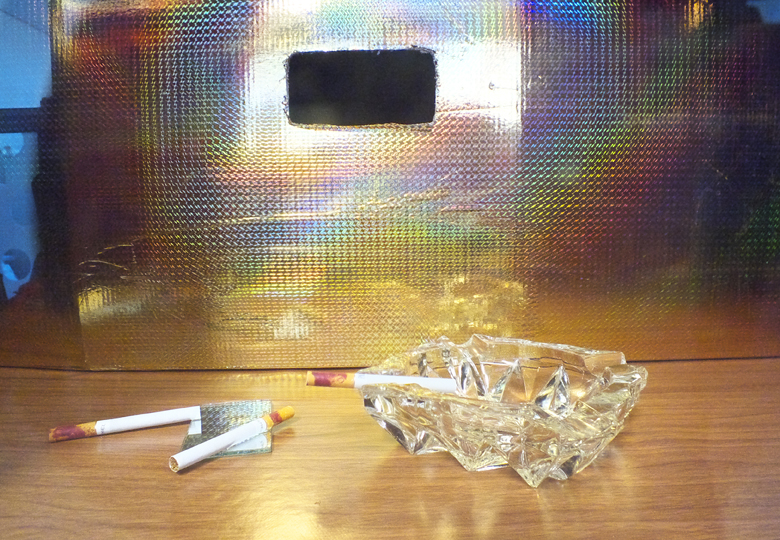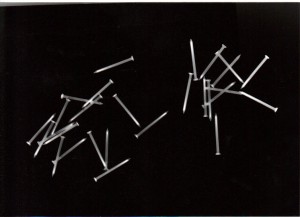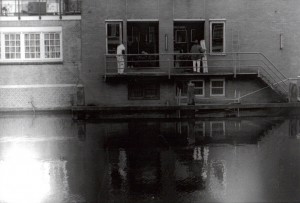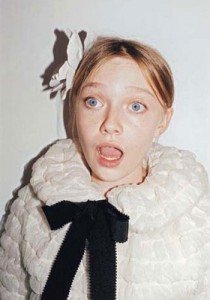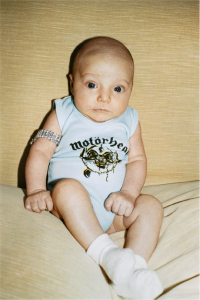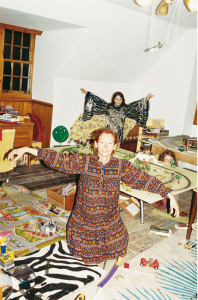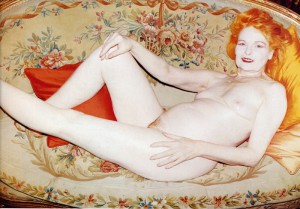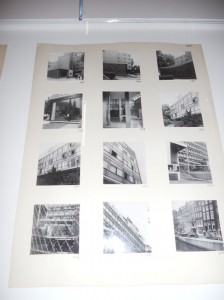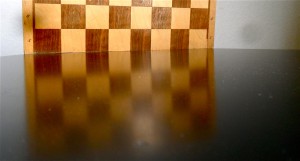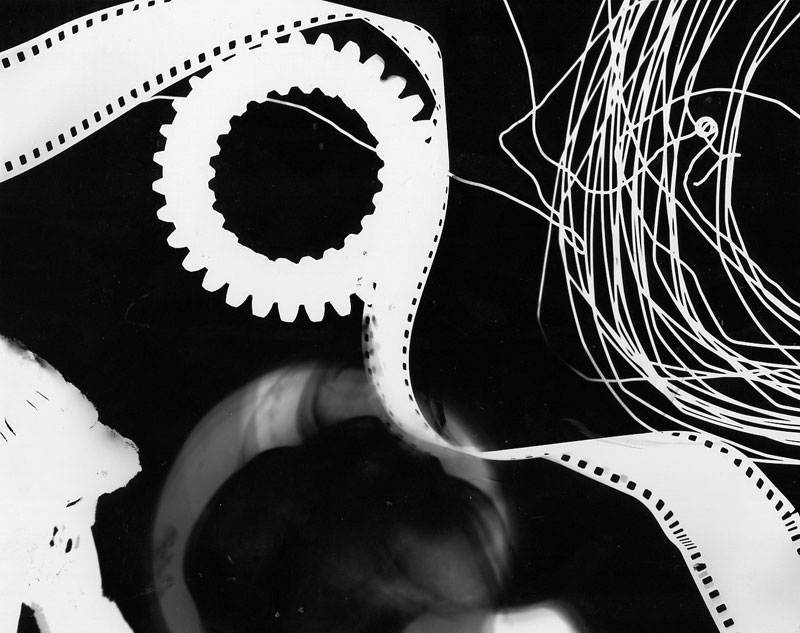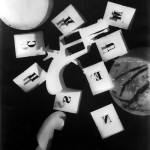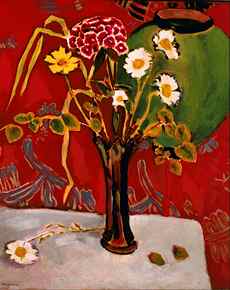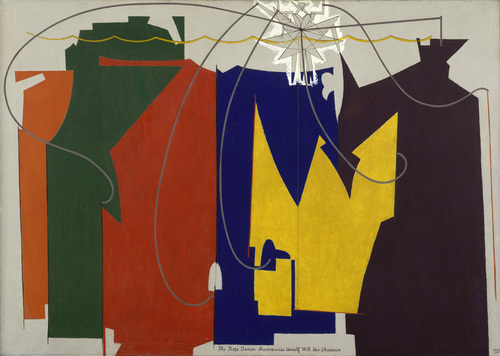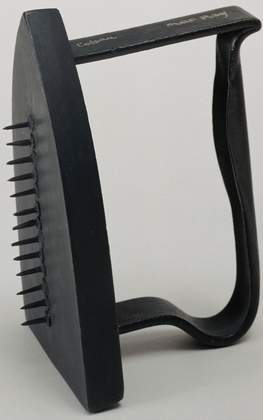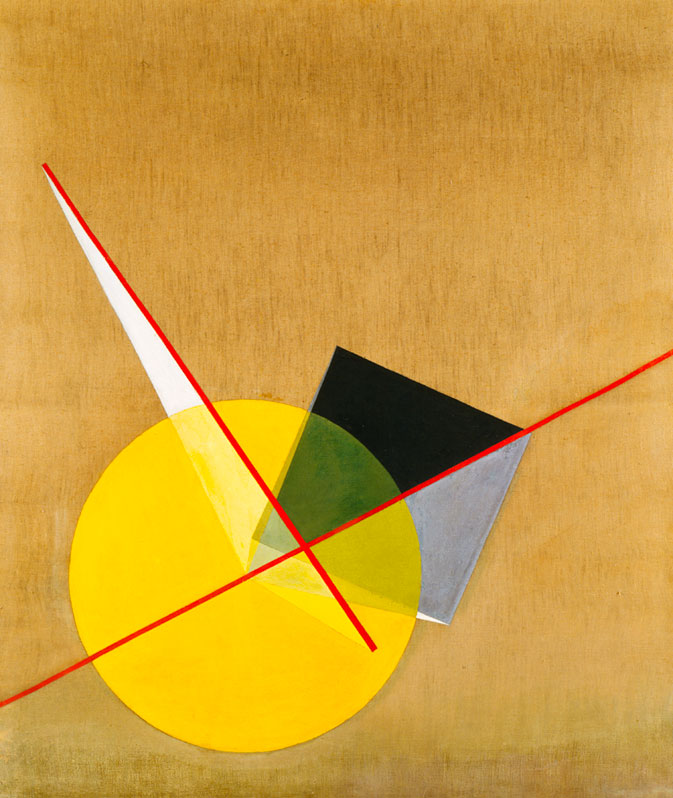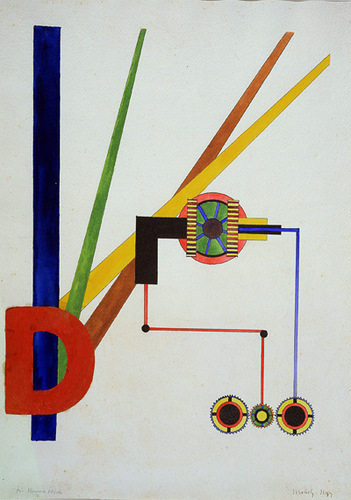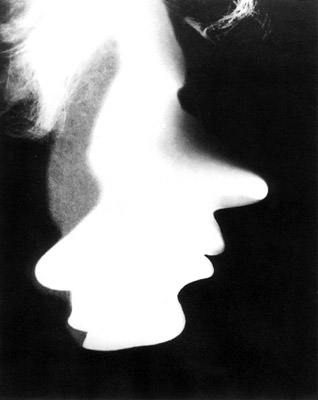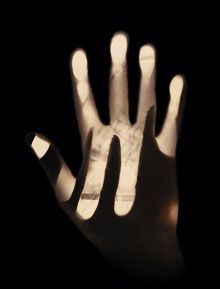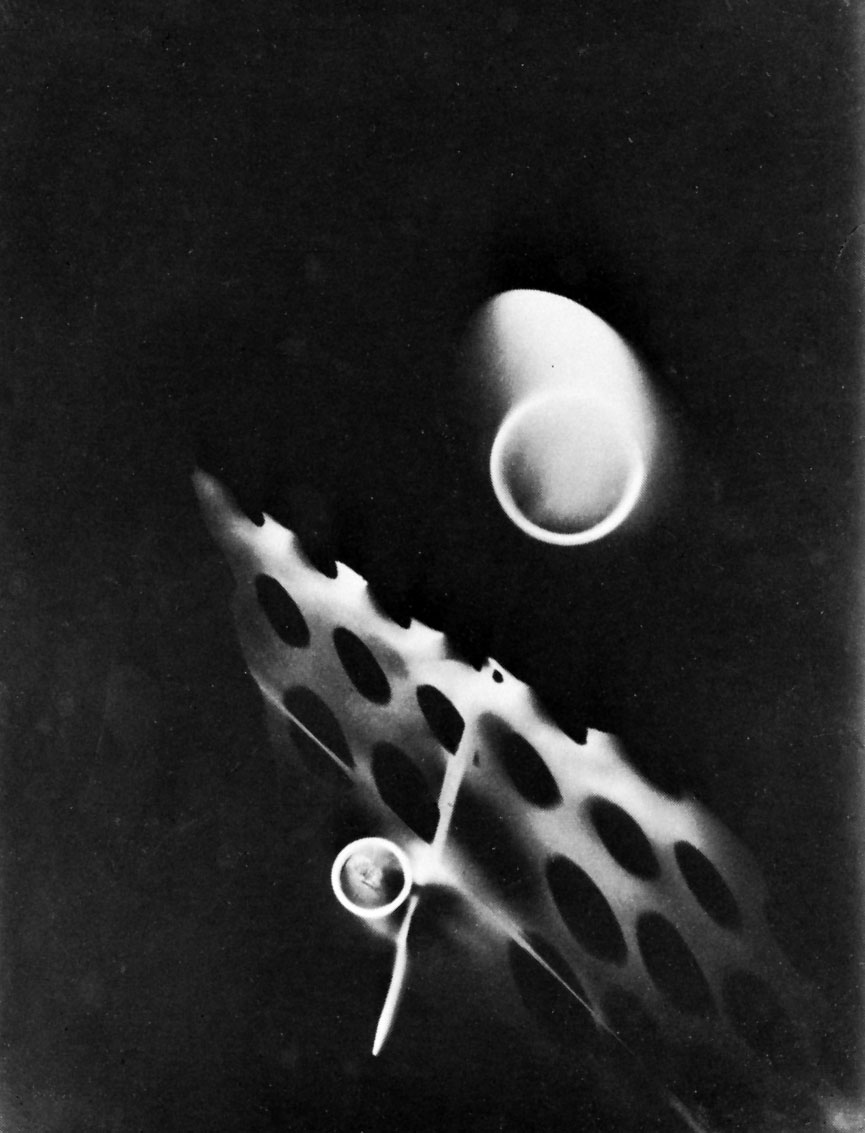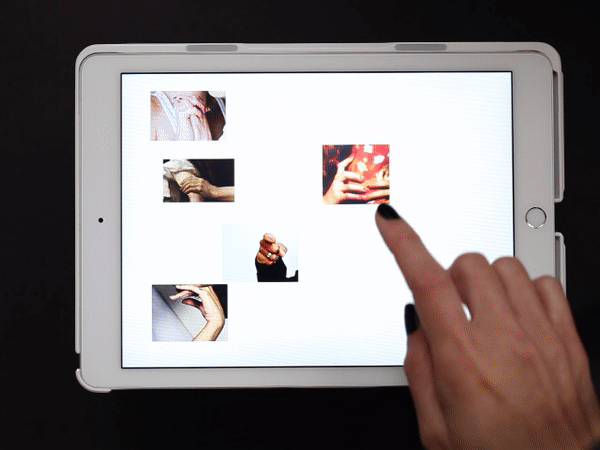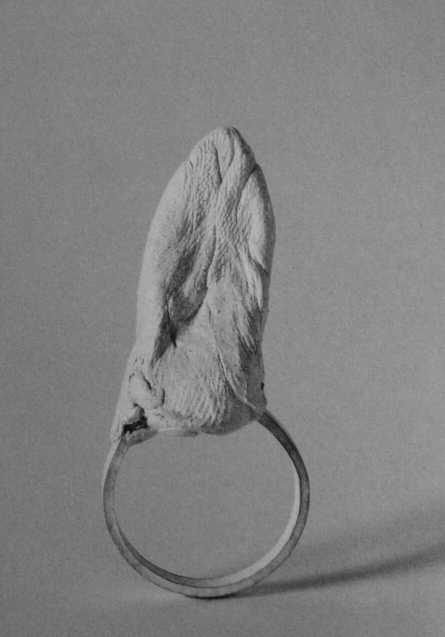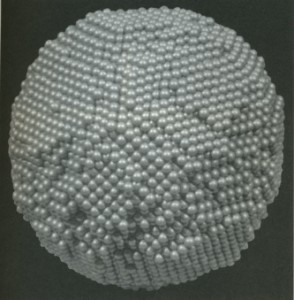After a long walk on the frozen canals of Amsterdam we arrived at “Fashion and Foam”, where the hot stove welcomed us. We took a seat on the stove to warm our selves. When my toes ware thawed and my fingers not purple anymore I discovered something interesting, two life-size pictures of a man. On the left picture the man is dressed in a long black coat with a cowl and a long black cloth draped on the floor. The only visible thing of this man is his long black beard and his right hand. The right picture is exactly the same positioned the only difference is the color of the clothing. In this picture the man is wearing grey. The same tint grey as the curtain on the background. Both pictures are printed on fabric that hangs from the sealing and lays draped on the floor. Because of this it looks like the two men are really standing in this room.
I found that fascinating, artists who play with what you see, mysterious and exciting because the men looked so real, and still so unreachable. This made me very curious about who the artists were and what else they would make.
After a second wintry hike I arrived at home. After a cup of very hot chocolate I decided to google these two mysterious artists thoroughly. I was curious if their work was still in relation with the Gerrit Rietveld Academy. The result of this search session was an enormous amount of surrealistic photo-series containing a lot of optical illusions. Every picture the duo makes asks the viewer lots of questions. Is this photoshopped or is it reality? Is this 3D or flat? How does the face of the person on the picture look like? Is this old or newly made? Is it art or fashion? And these questions don’t stop, they keep coming when you’re looking at their work. I began to wonder who these artists really are and where they get their inspirations from.
Carmen Freudenthal was born in 1965 in Utrecht. Form 1983 till 1988 she studied Photography at the Gerrit Rietveld Academy. She lives in Amsterdam, as well ass her colleague Elle Verhagen. Elle Verhagen was born in 1962 in Gemert, and also studied from 1983 till 1988 at the Gerrit Rietveld Academy, instead of photography she did Fashion, but she was always very interested in photography. They started working together after their graduation, and are still doing that up till this moment. Their work combines fine art photography with fashion, surreal imagery with brutal reality.
Often, their inspiration comes from fashion. Elle collects clothing she likes and finds interesting because of its shape or texture., while Carmen lets her fantasy go free towards connecting in formal language. Their models are not selected by their beauty, the only important thing is; they should be uncommon! Sometimes the photo shoots are taking a few days, because the pictures have to be perfect. But after these shoots the duo is not finished yet. They adapt their work to three-dimensional collages, which transform into spatial sculptures with a surrealistic touch. Elle; ”For us everything that happens after the photo shoot is at least as important. After that we can start cutting, pasting and creating. We transform!” mostly their works becomes tree-dimensional, sometimes it stays flat. They work with Photoshop but mix that often with other techniques, this often creates these optical illusions because you do not understand anymore what you see.
But photo series is not the only thing Carmen and Elle make. They have also done different installations and short films. Their most recent short film is; “dear Mr/Mrs” and was made for ArtEZ fashion masters.
This film raises question, is intriguing and quite confusing. The main person in this short film is Ray van Haaren. His face is not really manly, pretty feminine so to say. He is wearing a wig, make up and sometimes a dress, this makes you wonder if you are looking at a man or a lady. Carmen and Elle are very good in creating this confusion, but they don’t go to far. Their work stays subtle. I think that is very special and recurrent in their work.
In collaboration with fashion designers, performers and other artists they create various different works. But is it still very recognizable because of their typical humorist approximation of the daily life and their unmistakable own style. This makes quite clear on which academy Elle and Carmen had studied. An academy which stands for the freedom in development of your own approach. The Gerrit Rietveld Academy aims to support talented young people. The academy want students to create independently, so that they can grow and develop their individual style. the enormous amount of different cultures that study at the academy creates a Gathering of cultural aspects in art as well. This is something which you can very clearly see in the work of Freudenthal and Verhagen. look for example at this work ;
A lot of different people with different skin colors and different kinds of clothing, some look a bit folkloric. some are afraid of the “ghosts” and others dance with them. I think these kind of works can only be created by artist who studied on an academy with many cultures and such a freedom as the Rietveld Academie. Typical aspects that are very visible in the works of Elle and Carmen. I think these aspects of the academy are really good, and now already after studying for one year at it myself I can tell that I have learned and developed so much because of them.


